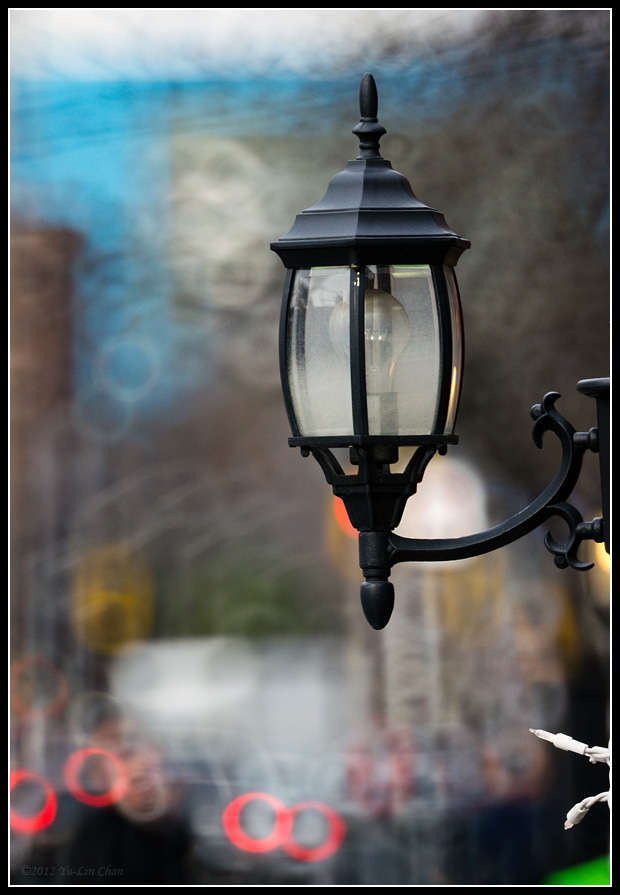Lamps -- NEX-5N & Minolta RF 250mm f5.6.
This Minolta RF lens is very light, and very small. It's about the size of the Vivitar Series-1 28mm f1.9, but much lighter. The build quality is excellent and it focus very smoothly. One of the best features I like, is that there is a protective glass on the front of the lens. Most mirror lenses have exposed mirror surfaces, and mirror surfaces are very easy to scratch, therefore, extreme care is needed when cleaning it. You can clean this lens like a normal lens since has a hard glass surface.
Park Bench -- NEX-5N & Minolta RF 250mm f5.6.
As far as mirror lenses go, this one is the sharpest one I have used. Sure, the Zeiss Mirotar I am sure will be better, but it's much harder to find and more expensive. This lens, like most older lenses, suffer from purple/green fringing on high contrast areas, though not as bad as many other lenses. As the signature of all mirror lenses, the out of focus areas highlights are seen as doughnut rings. Some people like them, but many don't. I don't mind them, actually. Doughnuts can make some interesting backgrounds.
Chains -- NEX-5N & Minolta RF 250mm f5.6.
The most frustrating aspect of long lenses is the very narrow angle of view, and thus it amplifies every small movements of the lens, making it extremely hard to focus. I shot all the pictures handheld today, with a Speed Priority setting it to 1/320s, which is still too slow, but often good enough thanks to the very excellent NEX-5N's very short shutter lag. The ISO is often at 800 or even 3200 even in the middle of the day, depending on how much light the scene has.
Some mirror lenses, such as the Tamrons, has a very close focus distance of 1.7 meters and magnification ratio of 1:2.7. This one does not have a claimed macro mode, but the minimum focusing distance is 2.5 meters, which is not too bad. Not sure what the magnification is, though.
After one day of use, I can understand why people want this lens. I never had this much luck before using a mirror lens and get so many in-focus pictures. The shorter 250mm focal length is part of the reason, but I think the small size and easy hand holding contributes to the fact. Most of all, it has very good optical quality as a mirror lens.
Lamp -- NEX-5N & Minolta RF 250mm f5.6.




For me, the question is does the bokeh add to the scene. In the first shot with the 3 lights, it definitely does. It gives the street an even more olde worlde feel. However I don't like the effect much with the two park bench seats. A smoother bokeh would have been better here.
ReplyDeleteTrue. Mirror lenses are not known for their good bokeh, but interesting nevertheless.
ReplyDelete